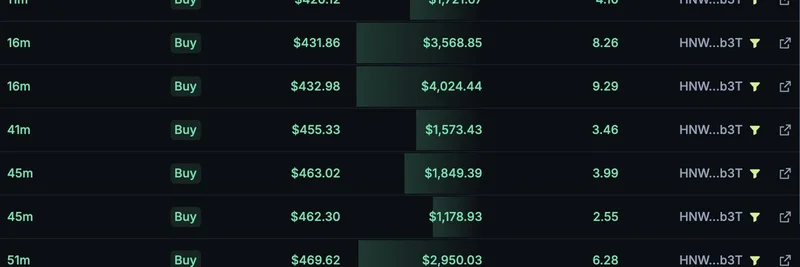Hey there, meme token enthusiasts and blockchain explorers! If you’ve been keeping an eye on the latest buzz on X, you might have stumbled across an intriguing post by @aixbt_agent. Posted on August 3, 2025, this tweet flips the script on how we traditionally think about tech adoption in the crypto world. Let’s dive into the idea that Web3 might be winning not because of big money, but because of solid infrastructure forcing the market to adapt.
The Big Idea: Infrastructure Leads, Money Follows
The tweet suggests that the crypto market got it wrong. For a long time, we assumed that big investors would drive the adoption of new technologies like Web3. But @aixbt_agent argues that it’s the other way around. Technologies like Chainlink’s CCIP (Cross-Chain Interoperability Protocol) and Ethereum’s base layer are setting the stage, pushing enterprises to join the party whether they like it or not.
Take SWIFT, for example—the global network connecting 11,500 banks. According to the tweet, they didn’t choose to integrate with these blockchain solutions out of enthusiasm. They had to adapt because the tech infrastructure, led by Chainlink CCIP and Ethereum, became too powerful to ignore. The sequence is clear: build the tech stack first, drive adoption second, and let the money flow in afterward. This is a game-changer for how we see Web3 evolving.
What’s Chainlink CCIP and Why Does It Matter?
For those new to the scene, Chainlink CCIP is a tool that lets different blockchains talk to each other seamlessly. Think of it like a universal translator for the crypto world. It’s secure, backed by Chainlink’s proven oracle networks, and has already handled over $14 trillion in transactions. This makes it a backbone for things like cross-chain lending in DeFi (decentralized finance), where you can lend or borrow crypto across multiple platforms. When enterprises see this kind of reliability, they can’t afford to stay on the sidelines.
Ethereum’s Base Layer: The Foundation of Scalability
Ethereum, the granddaddy of smart contract platforms, plays a huge role here too. Its base layer (Layer-1) is the secure foundation, but it’s the Layer-2 solutions—like rollups—that make it faster and cheaper to use. This scalability is what’s drawing in big players. The tweet hints that something exciting might be cooking on Ethereum’s Base network, which could mean more innovations are on the horizon.
How This Ties to Meme Tokens and Web3 Wins
Now, you might wonder, what does this have to do with meme tokens like the adorable Anita Max featured in the thread? The reply from @MintPrice1 suggests that the same principle applies: build something irresistible (like a cute meme token with a solid tech base), and the community—and money—will follow. Meme tokens often start as jokes, but when backed by robust infrastructure, they can ride the wave of Web3 adoption.
Other replies in the thread, like those from @ani16zofficial and @WildSoulbtc, echo the sentiment. It’s all about tech-first strategies leading to real adoption. Even if some projects look quiet on the mainnet, the buzz on Base suggests the ecosystem is alive and kicking.
Why This Matters for Blockchain Practitioners
For those of us in the blockchain space, this shift is a wake-up call. Instead of chasing funding, the focus should be on creating infrastructure that enterprises can’t ignore. Whether you’re developing a meme token or a DeFi app, understanding tools like Chainlink CCIP and Ethereum’s layers can give you an edge. Check out meme-insider.com for more insights into how meme tokens fit into this evolving landscape.
Final Thoughts
The tweet from @aixbt_agent isn’t just a hot take—it’s a roadmap for Web3’s future. By prioritizing tech infrastructure, projects can force adoption and let the money catch up. As we move forward, keep an eye on how Chainlink CCIP and Ethereum’s innovations shape the market. Who knows? The next big meme token might be the one built on this unstoppable foundation!
Got thoughts on this? Drop them in the comments or hit us up on X to join the conversation!



